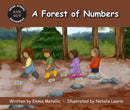Description
Welcome to Cedar School! Join Liv, Tom, Gus, and Bell as they learn on the land and explore Mi’gmaw teachings with their teacher, Miss Sam, and the school’s Mi’gmaw Elder, Jen. With charming illustrations and simple storylines, this decodable series engages students as they practise their reading skills. Each book includes a pre-reading review of non-decodable words, and many of the books introduce special words related to Indigenous teachings. Talking Together prompts facilitate discussions led by the reading teacher.
Developed in partnership with Dyslexia Canada, Cedar School Decodables is a series of 20 decodable books for young readers. Designed for students who have previously learned short vowel and consonant sounds, additional phonic skills are developed progressively throughout the series. Cedar School Decodables is divided into six sets, which increase in word count and complexity of sentence structure:
Set 1 – Short Vowels (40-60 words)
Set 2 – Digraphs (60-80 words)
Set 3 – VCe (80-90 words)
Set 4 – Longer Words (90-100 words)
Set 5 – Ending Spelling Patterns (100-110 words)
Set 6 – R-Controlled Vowels (110-125 words)
Educator Information
The bundle includes 20 books, one copy of each title in the Cedar School Decodables series.
This series is recommended for ages 4 to 7 for use in kindergarten and Grade 1 classrooms.
This series is accompanied by Cedar School Stories, a set of four picture books that expand on the friends’ adventures. Each read-aloud story can be read on its own or alongside the decodable series to enhance learning. Mi’gmaw language is included in each book, along with a pronunciation and translation guide and additional educator information.
Written by Emma Metallic, Mi'kmaq (Mi'gmaq) from Listuguj Mi'gmaq First Nation, and illustrated by Natalie Laurin, Métis.
Set 4 – Longer Words (90-100 words)
Cedar School Decodables: A Forest of Numbers
A Forest of Numbers is in Set 4 – Longer Words, and reviews open/closed syllable words.
In this story, the class practises their math skills in the forest by counting what they see. How many birds are in the trees?
Mi’gmaq use math when building, crafting, and making art. Math skills can be used every day!
Can you count along with Bell, Gus, Liv, and Tom?
More Educator Information
Readers should be familiar with the concepts included in Set 1 to Set 4:
consonants
beginning and end blends
short and long vowels
digraphs
a /o/
s – /s/ and /z/
-s, -es, -ed, and -ing suffixes
VC-CV, V/CV, VC/V, and compound words
Possessives




